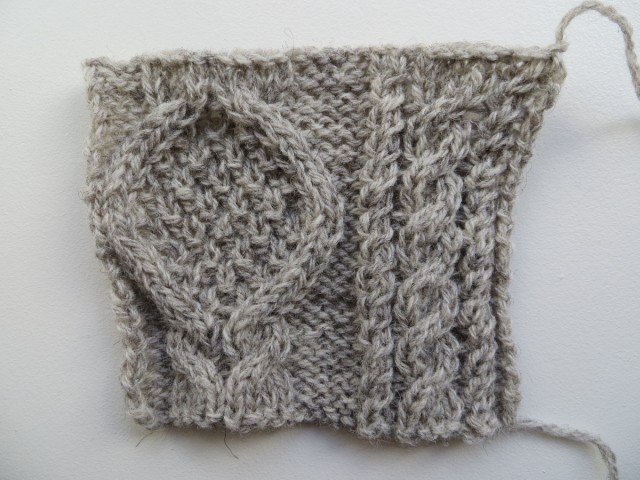As all fibrephiles, I love hand-dyed yarns for their nuanced or vivid colors, variation of tones, softness, for all in short, and especially those from Malabrigo or Madelinetosh.
But I should say that the Americas are far away from France!
In my real life, we eat “local” and French as much as possible (we’re a member of community supported agriculture association) and for a while now, I try to apply this principle to yarn purchase preferring European yarns.
And last week, I bought a very local yarn, which couldn’t be more local.
This Origine 3 fils of Les Toisons Bretonnes (Breton Fleece, Origin 3-ply) is sourced from Brittany breeds sheep (Landes de Bretagne and Belle-Île) raised in Brittany and Pays de la Loire regions, and scoured and spun in the centre of France.
This yarn is ultimately local for me, because I live in a city which was the ancient capital of Brittany where there’s still the Castle of the Dukes of Brittany, but is no more in Brittany but in Pays de la Loire region (am I confusing you?). If I want to get “more” local yarn, I must raise sheep, sheer them and spin their fleece myself – I have to confess that it’s one of my dreams…
This yarn is local and organic, reduces my carbon footprint that way, and supports the local economy. But isn’t soft! It’s rather dry and scratchy, contains spinning oil I think, because it smells of oil and softens after washing. On this point, it resembles Supersoft of Holst Garn, which isn’t soft at all before washing.
This picture shows the swatch before washing.

The fibers hold on together as with all woolen spun yarns (I’m thinking in particular of Supersoft from Holst Garn or Spindrift from Jamieson’s of Shetland) and once knit, stitches wouldn’t move – you need to keep a steady tension.
I’ve been knitting an Aran pullover and at a moment, I got anxious because the stitch definition seemed too clear, neat and sculptural, and washed the swatch.
And the transformation was total! It really got soft, the stitch outline softer. This impression is not only due to the difference of luminosity.

Of course, it can’t equal the softness of merino wool even after washing. But if you’re in Europe and concerned about your “carbon footprint” in your knitting life, you can count on this wool!
It’s proposed in three weights, 2-ply (2 fils), 3-ply (3 fils) and 4-ply (4 fils), respectively sport, worsted and aran weights. And since they’re woolen spun yarns and very lofty, you have more yardage (400 m, 260 m, 200 m per 100 g for each weight). They’re all available in natural undyed colours (Origine series) and colours dyed with the OekoTex 100 certification (Gamme teinte), here at Laine et Tricot! Gwenola, the shop owner, has just launched Bruyère series of this brand, with nuanced greyish colours, can’t wait for trying it!

